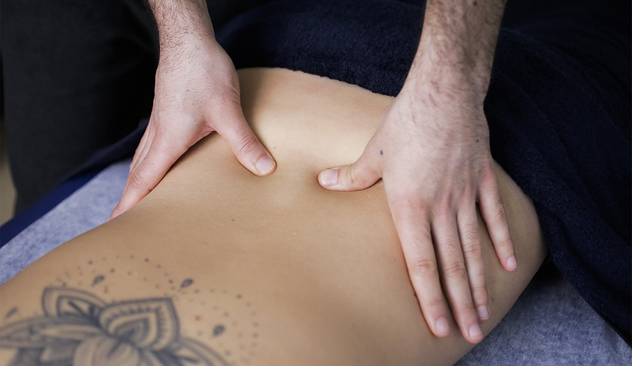Treatment
Deep Massage

Info & details
About deep massage
Some of the techniques used in this case are also used in the treatment of the classic massage, men to loads of the tissue in depth and perform slower movements and deeper and just concentrated pressure in places of tension. All this is done to reach the base of the muscles and fascia (muscles surrounding the connective tissue).
How does this treatment work?
When there is a chronic muscle tension or some injuries, there are usually attachments (very painful bands of rigid tissue) in the muscles, near the tendons or near the ligaments. Adhesions can block the circuit and cause pain, but also restrict movement and inflammation.
For this, deep tissue massage is very useful as it has the ability to break these attachments to relieve pain and restore normal blood circulation. To do this, the masseur not only uses special techniques in the right places (acupressure on the trigger points), but also specific massage oils and deep and direct pressure. However, the muscles need to be relaxed so that the therapist can reach the deeper muscles and perform his work in the best way and to achieve greater results.
Is this treatment painful?
At certain times during the massage, most people usually experience some discomfort and even pain. In these cases, it is important to inform the masseur, or in any case, the professional is able to notice it in such a way that it can behave accordingly.
There is usually some stiffness or pain even after a deep tissue massage, but this should gradually subside within a day or so. The therapist may also recommend applying ice to the area immediately after massage.
What are the benefits of deep tissue massage?
This massage has great potential in itself, and the first of all is simple touch. Afterwards, it must be said that deep tissue massage usually focuses on a specific problem, such as: chronic muscle pain, injury rehabilitation, back pain, limited mobility, recovery from injuries (e.g. whiplash, falls, sports injuries), repetitive strain injuries (such as carpal tunnel syndrome or tendinitis) , postural problems, muscular tension in the posterior muscles of the lower extremities, sciatica, spasms, etc. Therefore, it is obvious that the benefits of the treatment are found precisely in the area being massaged. However, research has also been conducted which has confirmed that many people have found this type of manipulation more effective than pharmacological treatments, chiropractic, acupuncture and many other solutions prescribed for their problems.
Deep tissue massage has also reported the greatest success in reducing pain from fibromyalgia. In addition, many people have shown that they can move much better immediately after a deep tissue massage.
How should a masseur act from the first session?
Masseurs can use fingertips, knuckles, hands, elbows and forearms during deep tissue massage. Just as the patient will be asked to breathe deeply, the massage therapist can work better in certain areas of tension.
Precautions must be taken ...
In fact, this type of massage is not recommended for people who have infectious skin diseases or rashes or open wounds, people who have just undergone surgery, chemotherapy or radiation-based treatments, and those who have not received the doctor's approval. For example, people with osteoporosis should always consult their doctor before getting a massage.
Advice before and after treatment
Each masseur must communicate to the patient what to do before and after massage. Before the session, for example, do not eat a heavy meal, and do not be late or rush. In addition, one must always communicate in advance that deep tissue massage can cause muscle pain or soreness that can last a day or two.





